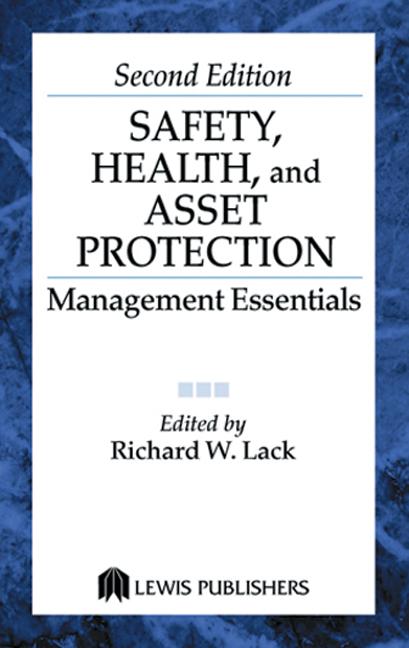Safety’s bread ‘n butter: 20 essentials for safety system success

In the early aughts Dan Petersen had the last word in every issue of ISHN with his “Petersen’s Page” running opposite the inside back cover. For 53 years until his passing in 2007, Dan prodded the field to raise its level of professionalism in books, articles, speeches and teaching. This is an edited version of “Petersen’s Page” columns from June and July 2006. Together they comprise Dan’s 20 essential elements of a safety system
1 — Accident investigation
A good safety system deals positively with the investigation of accidents and thus minimizes any attempt to cover up causes and effects. In a quality accident investigation process, the search for cause goes beyond identifying the unsafe act and condition; it searches for multiple causes including weaknesses of the management system.
2 — Quality of supervision
In a good system, supervisors are perceived to be performing certain tasks related to accident prevention in a competent manner. These tasks include: providing safety orientation for new employees; recognizing and/or rewarding safe work behavior; effectively handling employee concerns about personal matters; discussing goals for safety performance with employees on a regular basis; and making regular observations and inspections.
3 — Alcohol & drug abuse
Employees with problems are not allowed to work and are perceived as being dealt with effectively by supervisors and the company program. The program is visible and is credited with helping to eliminate alcohol and drug abuse on the job. Supervisors are trained in how to spot and how to deal with abusers, both what and what not to do.
4 — Attitudes toward safety
In a good safety climate management considers safety to be important; supervisors are seen as paying adequate attention to safety and getting support from management; employees see management’s effort to run a safe operation as “fair” and “effective;” employees support management’s safety efforts and take an active interest in safety performance; risk-taking is discouraged at all levels of the organization.
5 — Communication
It’s essential for communication to go in both directions. Employees regularly receive information on the cost, frequency and type of accidents; hazards of the operation they perform and safe methods of operations; goals for safety performance and unit standings; and safety rules and operating procedures.
Supervisors and management regularly receive information on what is working and what isn’t; what problems exist, etc.
6 — New employee orientation
Employment practices should reduce the chances that new employees will have accidents. Some of these include: stressing safety policies in employment interviews; hiring only those fit to perform duties; orientation and training which stress the safety aspects of a job; assignment to work with safe employees; observation and reinforcement of work behavior.
7 — Goals
Some questions to ask: Is a system in place to set safety goals at all levels of your organization? Has training been done in how to set effective goals? Are employees involved in goal setting? Are goals written so they are achievable and measurable? Do individuals have written goals they are expected to accomplish?
8 — Inspections
Inspections should identify safety hazards, health hazards, management system weaknesses, and the causes of human error. Employees should be aware inspections are being made and may be involved in conducting them.
9 — Hazard correction
These systems include methods to determine what hazards exist, and the means to prioritize those hazards based on some measure of: frequency of expected loss; seriousness of loss from the hazard; and cost of hazard removal.
10 — Involvement
Some observable results from getting employees involved are: 1) Personal interest in safety; 2) Reminding others to work safely; 3) Correcting or reporting hazards; 4) Knowledgeable about safety record and goal setting; 5) Active safety involvement teams.
11 — Awareness
Awareness programs seldom, if ever, affect behavior. But since most companies engage in these activities, any organization should check the level of employee acceptance of these efforts.
12 — Recognition
Many companies think of safety awards, contests, and trinkets as recognition. At best these might be awards, but they have little to do with recognition. Recognition is telling workers they are doing a good job. It is a one-on-one conversation.
13 — Discipline
Discipline rarely changes or improves behavior, but a poor discipline system, or a good one poorly administered, can affect behavior adversely over the long haul.
14 — Safety contacts
Contacts include safety meetings, one-on-one discussions, and other means used by supervisors and management to communicate.
15 — Operating procedures
Procedures can be set by staff, by top management or by employees themselves. However they are set, procedures can either be meaningful tools or pages in a forgotten manual.
16 — Supervisor training
Define the tasks or activities the supervisor should do. This can be done via authority or participation. Once defined, the supervisor must know how to do the tasks. And performance must be measured and rewarded.
17 — Support
Is the organization working together to create a safe work environment? Positive outcomes obviously require support and behaviors from the entire organization.
18 — Employee training
Performance in safety depends upon ability and motivation. Training is essential.
19 — Management credibility
Perception of credibility is built over time, and is based on decisions, reward structures, measurements used, money spent or not spent, visibility, etc.
20 — Stress management
Check factors that lead to stress and stress claims, and signs that indicate stress is present.
Looking for a reprint of this article?
From high-res PDFs to custom plaques, order your copy today!





